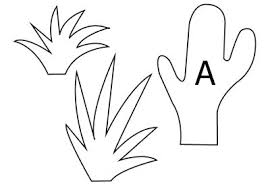Foods Linked with the Symbolism of Family Happiness in Feng Shui

In many cultures, food plays a vital role in celebrating family bonds, tradition, and prosperity. In Feng Shui, food is often seen not just as a source of nourishment but as a symbol of energy, balance, and positive energy. Certain foods are deeply associated with the concept of family happiness, as they are believed to enhance harmony, attract good fortune, and bring blessings to the family unit. This article explores the foods that hold special significance in various traditions and cultures, particularly in relation to family happiness and prosperity, all through the lens of Feng Shui and symbolic meanings.
1. The Role of Food in Feng Shui and Family Harmony
In Feng Shui, the energy in a home greatly influences the relationships and prosperity of the family. The kitchen and dining area are especially significant, as these spaces are where nourishment, energy, and family connections come together. What is placed on the table not only nourishes the body but can also impact the overall energy flow in the household. The food we prepare, serve, and eat carries with it symbolic meanings that can either contribute to or detract from family happiness.
Each food ingredient and dish has specific associations with different energies, including abundance, harmony, love, and longevity. By incorporating certain foods into family meals, households can encourage the flow of positive energy that supports mutual respect, understanding, and well-being. Below, we will explore several dishes that are traditionally linked with family happiness in various cultures and the symbolism they carry in Feng Shui.
2. Foods Symbolizing Family Happiness in Feng Shui
A. Dumplings (Jiaozi)
Dumplings, particularly in Chinese culture, are a classic symbol of prosperity and family unity. The shape of the dumpling is said to resemble ancient Chinese gold ingots, symbolizing wealth and good fortune. Because of this, dumplings are often served during Chinese New Year celebrations, family gatherings, and special occasions, such as weddings and birthdays.
The act of preparing dumplings is often a family event, symbolizing the coming together of loved ones. Each dumpling is stuffed with a variety of ingredients that bring different blessings. For example, pork is believed to bring prosperity, while shrimp symbolizes happiness and cabbage represents a long and flourishing life. The collective preparation and enjoyment of dumplings can help strengthen family bonds, making them an essential dish for fostering family happiness.
In Feng Shui, the round shape of dumplings, much like other round foods, signifies completeness and wholeness—qualities that promote balance and unity in the home.
B. Fish (Yu)
Fish is another food that holds deep significance in Feng Shui. The word for fish in Chinese is “Yu,” which sounds similar to the word for surplus or abundance. In many Chinese households, a whole fish is served during celebrations, especially during Chinese New Year, to ensure prosperity and good fortune in the coming year. The fish symbolizes the flowing energy of wealth and blessings, as fish are associated with moving water, which is linked to prosperity in Feng Shui.
The whole fish is particularly important, as it represents completeness and the concept of a full, united family. Serving fish during family meals is thought to attract positive energy and good fortune, reinforcing the notion of a harmonious household.
C. Noodles (Longevity Noodles)
In many East Asian cultures, long noodles are eaten to symbolize long life and family longevity. During birthday celebrations or New Year’s festivities, it is common to serve a bowl of long noodles, known as longevity noodles. These noodles represent the desire for a long, healthy life and the importance of maintaining strong family ties.
From a Feng Shui perspective, the noodles’ length symbolizes the connection between generations, with long noodles symbolizing the continuity of family heritage and unity across time. Eating these noodles together as a family encourages family well-being and reinforces the bond between family members, making them an essential food to enjoy in the presence of loved ones.
D. Rice (Mi)
Rice is a staple food in many cultures around the world, and in Feng Shui, it holds great significance as a symbol of abundance and prosperity. In Chinese culture, rice is often seen as a symbol of family unity, as it represents the energy needed to nourish the household. A full bowl of rice signifies a well-nourished, happy family that is thriving and filled with blessings.
Serving rice at family meals is a way to ensure that the family is always well-provided for and that good fortune flows into the household. A full bowl of rice also symbolizes stability, as rice is considered an essential and reliable food source. In Feng Shui, rice is believed to enhance prosperity and harmony, making it an ideal food to include in family meals for positive energy.
E. Tangerines and Oranges
Fruits such as tangerines and oranges are commonly associated with good luck and prosperity in many cultures. In Chinese tradition, tangerines and oranges are often given as gifts during the Lunar New Year because their vibrant color and round shape symbolize wealth and happiness. The bright orange color is linked to the Fire element in Feng Shui, which represents energy, passion, and success.
In addition, the sound of tangerines or oranges being peeled during family gatherings is said to enhance the positive Qi (energy) in the home. Tangerines and oranges are often included in fruit baskets or as offerings to ancestors, reinforcing the idea of family connections, prosperity, and a flourishing household.
F. Sweet Rice Cakes (Mochi)
In Japanese culture, mochi, a sweet rice cake, holds significant meaning during family celebrations. Mochi is often consumed during the New Year and other festive occasions to symbolize renewal and family happiness. The sticky texture of mochi is believed to represent the strong bonds between family members, making it an ideal food to share during family gatherings.
In Feng Shui, sweet rice cakes like mochi are considered to enhance the Earth element, which is associated with nourishment, stability, and relationships. Sharing mochi is believed to promote harmony and lasting family bonds, making it a perfect food to strengthen family unity and happiness.
G. Pomegranates
Pomegranates are often considered a symbol of fertility, abundance, and family happiness in many cultures. In Chinese culture, pomegranates are seen as a symbol of many descendants and are often depicted in art and decorations during festivals and family occasions. The fruit’s numerous seeds represent the desire for children and a prosperous family life.
The red color of the pomegranate is associated with passion, luck, and energy, while the seeds symbolize the potential for growth and a successful family legacy. Pomegranates are often served at family celebrations to bring good fortune, fertility, and long-lasting happiness to the family.
3. Conclusion: Nurturing Family Happiness with Symbolic Foods
The foods that we prepare and share with our families are deeply intertwined with the ideas of abundance, harmony, prosperity, and longevity. In Feng Shui, food holds not just nutritional value but also symbolic significance, carrying positive energy that can nourish both the body and the family dynamic. By serving foods like dumplings, fish, noodles, rice, and tangerines, families can create an environment where happiness, prosperity, and love are nurtured.
Incorporating these symbolic foods into family meals reinforces positive energy, strengthens family ties, and attracts good fortune. Whether it’s through the round shape of dumplings or the long noodles symbolizing longevity, the foods we eat can serve as powerful tools in cultivating a joyful, prosperous household. By making mindful choices in what we serve and the significance behind each dish, we can create a space where family happiness flourishes, both in the kitchen and beyond.

